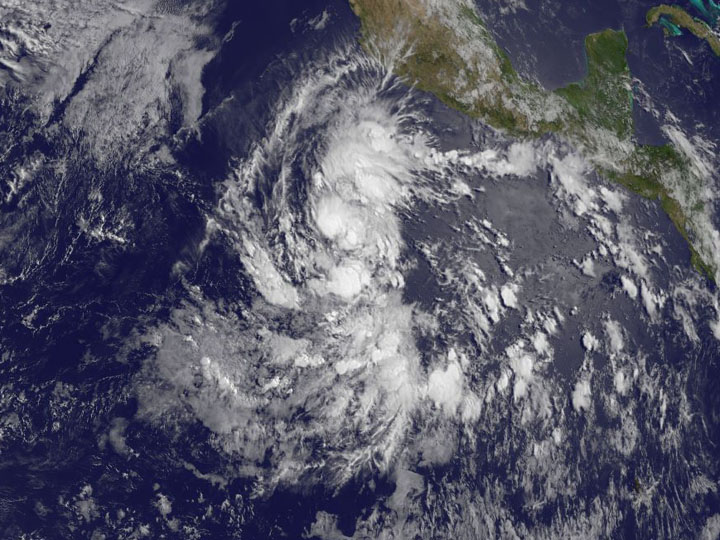Dawn Breaks on Tropical Storm Amanda in Eastern Pacific

NOAA's GOES-West satellite captured this visible image of renamed Tropical Storm Amanda on May 23 at 1500 UTC/11 a.m. EDT. Image Credit: NASA/NOAA GOES Project
NOAA's GOES-West satellite provided a visible image of Amanda on May 23 at 1500 UTC (11 a.m. EDT/8 a.m. PDT).
The GOES imagery showed strong thunderstorms in the northern and western quadrants and is indicative of a better structure in the banding of thunderstorms around the low-level center of circulation.
By that time, Amanda's maximum sustained winds had increased to 40 mph (65 kph). Tropical-storm-force winds extend outward up to 35 miles (55 km) from the center.
The NHC discussion indicated that forecasters there expect Amanda to reach hurricane strength in about three or so days.
Amanda was centered near 10.9 north latitude and 108.4 west longitude, about 620 miles (1,000 km) south-southwest of Manzanillo, Mexico.
Amanda was moving to the west-northwest at 5 mph (7 kph) and had a minimum central pressure of 1005 millibars.
Forecaster Berg at the National Hurricane Center noted that Amanda is expected to remain in weak steering flow (which means there's not a strong weather system to push or guide it), and its motion should remain less than 5 knots during the next 5 days.
Text credit: Rob Gutro
NASA's Goddard Space Flight Center
Media Contact
More Information:
http://www.nasa.gov/content/goddard/1e-eastern-pacific-ocean/All latest news from the category: Earth Sciences
Earth Sciences (also referred to as Geosciences), which deals with basic issues surrounding our planet, plays a vital role in the area of energy and raw materials supply.
Earth Sciences comprises subjects such as geology, geography, geological informatics, paleontology, mineralogy, petrography, crystallography, geophysics, geodesy, glaciology, cartography, photogrammetry, meteorology and seismology, early-warning systems, earthquake research and polar research.
Newest articles

Silicon Carbide Innovation Alliance to drive industrial-scale semiconductor work
Known for its ability to withstand extreme environments and high voltages, silicon carbide (SiC) is a semiconducting material made up of silicon and carbon atoms arranged into crystals that is…

New SPECT/CT technique shows impressive biomarker identification
…offers increased access for prostate cancer patients. A novel SPECT/CT acquisition method can accurately detect radiopharmaceutical biodistribution in a convenient manner for prostate cancer patients, opening the door for more…

How 3D printers can give robots a soft touch
Soft skin coverings and touch sensors have emerged as a promising feature for robots that are both safer and more intuitive for human interaction, but they are expensive and difficult…




















